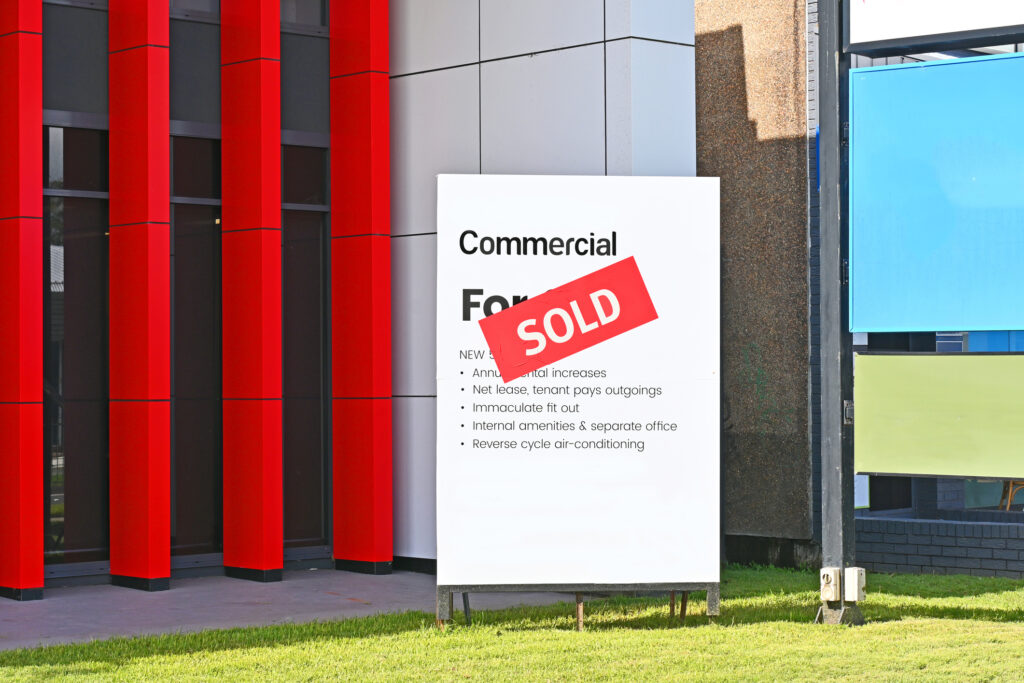In the United States, return-to-office (RTO) rules are still changing as of early 2025, and they have a significant impact on commercial property prices, commercial leasing rates, and staff retention. This is obviously different in each given marketplace and region throughout the country. As companies and investors adjust to the intricate dynamics of a changed workplace, these return-to-office policies offer the commercial real estate industry both opportunities and challenges. Understanding the return-to-office landscape is crucial for making informed decisions.

What is RTO Effect on Retention of Employees?
Understanding the Impact of Return to Office Policies
Strict return-to-office policies have been associated with lower levels of engagement and higher employee turnover, especially among knowledge workers who have become used to the flexibility of remote and hybrid work arrangements. According to several surveys, a sizable percentage of workers believe that having the option to work remotely is essential to their general well-being and job happiness. For example, recent KPMG research of 1,325 CEOs in eleven countries found that although 60% of managers choose RTO mostly because of financial obligations such as office leases, this position might result in more employee turnover and discontent. Time will tell if this is a trend or just an adjustment to a post COVID-19 workplace.
As we navigate the effects of the return to office, it’s essential to assess how these policies reshape employee experiences and corporate strategies. Organizations that prioritize return-to-office flexibility are likely to enhance retention and job satisfaction.
Moreover, the emphasis on return to office practices can create opportunities for enhancing workplace culture and collaboration. Companies embracing these changes may find themselves at a competitive advantage.
Companies have the difficulty of striking a balance between their desire for in-office collaboration and their employees’ changing expectations. Flexibility and work-life balance are increasingly more important to many high-performing workers than typical office settings. It has been demonstrated that requiring workplace attendance without providing enough flexibility leads to a decline in employee morale, disengagement, and talent exodus as employees look for alternatives that better suit their personal and professional demands. Businesses that embrace hybrid models or put careful RTO policies into place are likely to see higher employee satisfaction and retention rates while they struggle with these challenges. Companies, building owners, landlords and property managers are watching these trends develop with anticipation.

Understanding the return to office impact on leasing trends is vital for property managers and landlords. Adaptable leasing solutions are becoming essential as the demand for flexible workspaces continues to grow.
How is RTO Effecting Rates for Commercial Leasing?
Leasing rates have been significantly impacted by the significant decrease in office occupancy brought about by the move to hybrid work arrangements. Office occupancy in the United States was at approximately 50% as of May 2023, which is a sharp drop from pre-pandemic levels when office buildings were usually almost full. Leasing rates are under pressure to decline because of this sharp decline in demand, especially for older and less feature-rich homes that find it difficult to satisfy renters’ changing expectations. A reversion to the mean is on the horizon, but how far out is a the question.
Many businesses have reassessed their real estate portfolios in response to the increased demand for flexible work arrangements, which has led to downsizing and the adoption of more adaptable leasing agreements. Tenants looking to give their staff a desirable and effective work environment are increasingly choosing properties with cutting-edge facilities, wellness-focused design features, and sophisticated technology infrastructure. To stay competitive, landlords and property owners are thus being compelled to reconsider their leasing tactics and make improvements to their properties.
Traditional leasing arrangements have also been further upended by the growth of co-working spaces and serviced office options. Tenants can scale their space needs up or down with these flexible office solutions, which fit perfectly with the dynamic nature of hybrid work settings. Landlords are better positioned to sustain occupancy levels and secure advantageous lease terms if they can adjust to this trend and provide flexible lease structures.
The changing return to office dynamics illustrate the need for strategic investment in properties that cater to modern workspace demands.
By recognizing the return to office trends, investors can better align their portfolios with tenant expectations, thereby enhancing their property’s attractiveness.
The return to office movement is influencing the design and amenities of office spaces, driving demand for modern, flexible environments.

As professionals in commercial real estate consider the implications of a return to office policies, fostering open communication with tenants will prove essential to success.
The return to office strategies will also lead landlords to innovate in their leasing practices, ensuring they meet the evolving needs of tenants.
Incorporating insights on return to office preferences can significantly enhance tenant engagement and satisfaction.
What are RTO Effects on Values of Commercial Buildings?
The U.S. office market has rekindled investor interest despite the difficulties presented by decreased office occupancy and falling leasing rates. Compared to 2023, sales activity climbed by 20% to $63.6 billion in 2024. Investors taking advantage of inexpensive homes and strategically planning improvements to draw in renters are responsible for this spike in activity.
Upgrading office spaces to reflect the latest return to office trends will likely attract tenants who prioritize modern features and flexibility.
The awareness that premium, strategically situated office assets with contemporary amenities and environmentally friendly design elements continue to be alluring investment prospects is a major factor in the market’s newfound vitality. Stronger demand and improved financial performance are being observed for properties that offer flexible space configurations, integrate smart building technologies, and promote health and wellbeing.
Landlords are encouraged to leverage return to office insights to improve their property offerings and competitive positioning in the market.
As companies adopt return to office models, landlords can create flexible environments that meet the diverse needs of businesses and their employees.
Relocating and renovating old office buildings to accommodate the needs of a post-pandemic workforce is a growing area of interest for investors. In competitive properties, upgrades like touchless technology, better air filtration systems, and collaborative workspaces are becoming commonplace. Sustainability has also become a major factor, with energy-efficient designs and green certifications playing a significant role in both tenant appeal and property worth.
By aligning with the return to office trends, sustainability initiatives can enhance a property’s appeal to eco-conscious tenants.
The return to office landscape is still evolving, and its long-term impact on commercial real estate will become clearer as more businesses adapt to these changes.
Understanding the full extent of return to office effects will be crucial for stakeholders aiming to thrive in the changing commercial real estate environment.
Professionals in Commercial Real Estate Should Take These Strategic Aspects into Account
Professionals in commercial real estate face both possibilities and problems in the current environment. Navigating this changing market requires an understanding of tenant preferences and the changing dynamics of the workplace. Professionals who can foresee these changes and adapt by providing value-added services and creative solutions are likely to prosper.
What are Important Tactics and Ideas for Landlords, Property Managers to Consider?
Tenant Engagement Improvements
Those who give meaningful connections with their tenants top priority learn a great deal about changing space needs and preferences. Property owners and property managers can better match their offers to tenant expectations by encouraging open communication and carefully attending to these changing needs, so increasing satisfaction, creating long-term loyalty, and preserving regularly high occupancy rates.
Property Improvements Can Always Help Landlords
Office spaces can improve their appeal and competitive advantage by including current technology infrastructure, wellness-oriented design elements (gyms, day-care, etc.), and a comprehensive range of modern conveniences catered to changing tenant expectations.

Landlords and Property Managers Should Consider Flexible Leasing Structures
By incorporating co-working environments and offering adaptable lease structures, landlords can strategically broaden their appeal to a more diverse tenant base, including start-ups, remote teams, and established enterprises seeking satellite office solutions. This flexibility not only fosters a dynamic and collaborative work ecosystem but also serves as a competitive advantage, enhancing overall occupancy rates and maximizing asset utilization in an increasingly fluid commercial real estate market.
Sustainability Initiatives are all the Rage
Emphasizing environmentally sustainable construction methodologies and attaining esteemed sustainability certifications, such as LEED or WELL, can substantially augment commercial real estate’s market value and long-term efficacy. These initiatives correspond with global trends in Environmental, Social, and Governance (ESG) criteria and appeal to an expanding demographic of environmentally conscious tenants and corporate occupants who regard environmental stewardship as a fundamental business principle. Moreover, green building initiatives can result in enhanced operational efficiencies, reduced energy expenditures, and heightened tenant satisfaction, thereby establishing the property as a progressive and responsible investment within an increasingly sustainability-oriented market.
Time will Tell the Full Extent of RTO Impacts on Commercial Real Estate
Property values, leasing dynamics, and personnel retention policies all depend greatly on the changing return-to-office (RTO) scene. The commercial real estate market is changing dramatically as businesses rethink their physical footprint and hybrid work patterns get more ingrained. While strict RTO rules risk lowering employee morale and retention, forward-looking property owners and investors are reacting by reimagining the office experience through strategic investments in premium, amenity-rich locations meant to promote cooperation and well-being.
Commercial real estate professionals must be adaptable in this fast-changing landscape, using data-driven insights and new technology to predict tenant needs and create flexible lease solutions. Emphasizing adaptable layouts, wellness-oriented features, and sustainability projects will help buildings be destinations that draw tenants and assist their changing operating needs. Industry leaders may negotiate uncertainty, open new growth prospects, and maintain long-term asset value in a redefined office environment by embracing innovation and keeping tuned to market trends.

David currently is the broker/owner of several real estate related businesses which manage and maintain 300+ client properties on the San Francisco Peninsula.
Trust, transparency, and performance guarantees are the foundation of these businesses. David challenges anyone to find a PM professional that offers services similar - extensive education, customer service, and performance guarantees.
David also provides consulting for his clients on property development feasibility, construction, and complex real estate transactions.
David has authored a published law review article, three real estate books, and over 150+ real estate blog articles.
- “Wildfires, Insurance & Mortgages: Will Your Home Survive the Financial Aftermath?” - March 3, 2025
- What’s Driving California’s Commercial Real Estate Shakeup? - February 27, 2025
- Critical Issues in Triple Net Leases Investors Should Know - February 14, 2025

